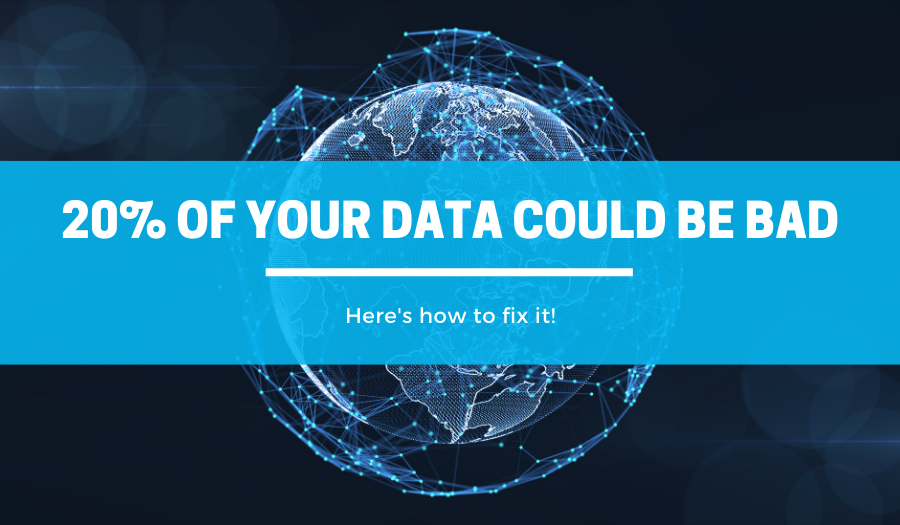
When you think about how much bad data can really cost you, it’s important to make sure that your info is deliverable, callable, and emailable.
Okay, so, you’ve got a...
MapAnything deals with location data, letting you know where your customers/prospects are.
It’s a different kind of data topic than we’re used to covering on The Corporate Data Show, but it’s definitely just as interesting.
In our most recent podcast episode Brian Bachofner, Head of Alliances at MapAnything, shared how location data can transform the way everyday sales reps succeed in their jobs.
“It’s about resource allocation, making sure sales reps have the right people in the right places to ultimately do their jobs. Think about a day in the life of the sales rep. What things are they dealing with? They’re getting new territories.” - Brian Bachofner
When they hear about location or geospatial data, most people gravitate to “What kind of slick sales tricks can I pull?” People get enamored with the technology: “It’s so cool; look what it can do!”
But how is location data really being used by sales or support teams to benefit their businesses? Think about a day in the life of the sales rep. What things are they dealing with?
They’re getting new territories. MapAnything is in the midst of doing territory alignments. They’re trying to determine where companies should put people in the field. It’s about resource allocation, making sure they have the right people in the right places to ultimately do their jobs.
For a lot of people, that takes weeks. You need a whole sprint cycle for it.
At the highest level, either from a leader or an individual contributor’s perspective, the question of where the people you’re selling to are located is important. Then when we get down to the raw level of the actual salesperson, it’s about efficiency and reducing the amount of time they’re behind a windshield and increasing the amount of time they’re in front of a client.

That could be using radius or other geolocation tools to say, “I have to be in this office from 1-2 on Thursday; let me build a five-mile radius.” Even better, using drive time, where can they get to in 10 or 20 minutes? Who can they meet?
In a lot of instances, companies have their CRM database (for customers) and their marketing databases (for prospects), and they’re not really integrated. The sales rep doesn’t have the ability to say “I’m going to 123 Main St. Show me people in this industry that are within five miles away.”
They do both. A good example is one of their clients: Renewal by Andersen, the replacement division for Andersen Windows. Leveraging the SalesForce platform, they were trying to give a targeted list of prospects to what they call their “canvassers”: people who go into neighborhoods, knock on doors, and say here’s a program for replacement windows.
They do a combination of two things:
So the benefit is twofold: know the best routes, and know how to categorize those routes for maximum efficiency.
"Think about a day in the life of the sales rep. What things are they dealing with? They're getting new territories." - @bbachofner
Having Brian on the podcast, bringing in data that’s not B2B, was a nice flavor change. Although I’m also excited to see what kinds of things we can learn when MapAnything incorporates B2B, if they do.
To get in touch with Brian, connect on Twitter or LinkedIn, and for anyone on SalesForce, check out their listing on the app exchange. That’s the easiest way to test drive everything we’re talking about here.
To speak with us here at EMM about any data questions you have, Contact Us Here
This post is based on a podcast interview with Brian Bachofner from MapAnything. To hear this episode, and many more like it, you can subscribe to The Corporate Data Show.
If you don’t use iTunes, you can listen to every episode here.

When you think about how much bad data can really cost you, it’s important to make sure that your info is deliverable, callable, and emailable.
Okay, so, you’ve got a...

On the most recent episode of the Corporate Data Show, I sat down with Harrison Tang of Spokeo and got really personal. And then professional. And personal again. That’s...